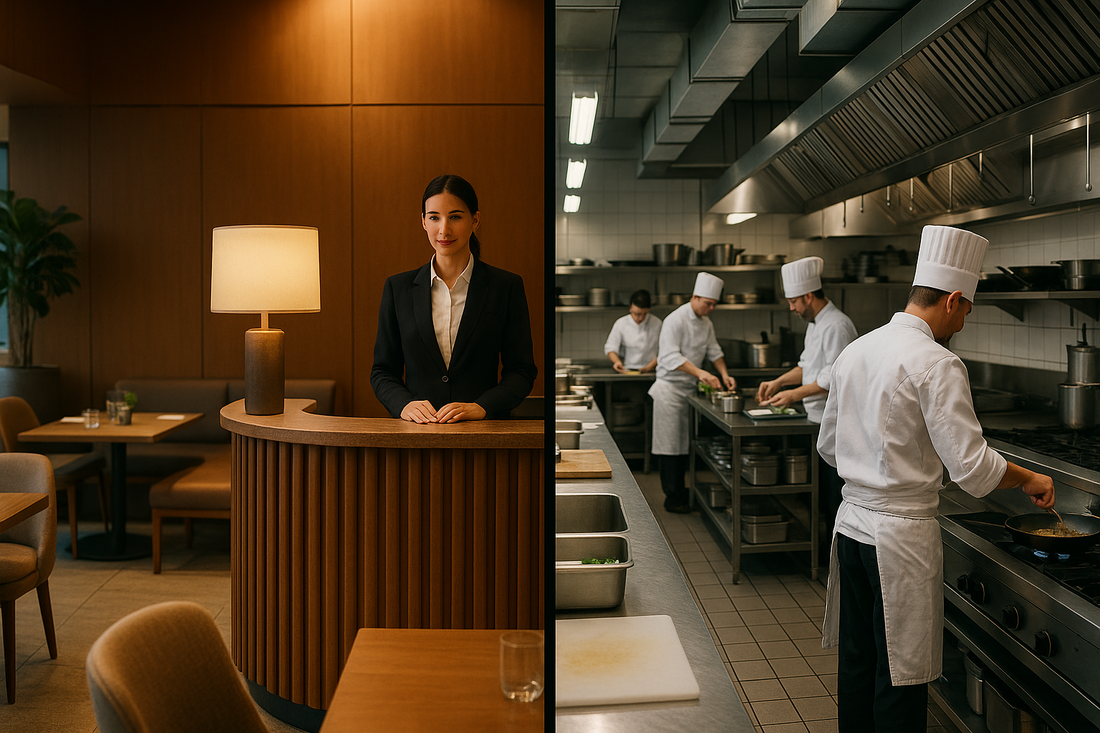The Symphony of the Culinary World: Analysis of Restaurant Positions and the Art of Team Collaboration
In the operation of a modern restaurant, each role functions like an instrument in a symphony orchestra—performing its own part while harmonizing with others to create a perfect dining experience. From the first greeting that welcomes guests to the presentation of the final dessert, every step relies on the meticulous work of dedicated professionals.
Front-of-House Team: The Face and Bridge of the Restaurant
The Restaurant Manager, as the core leader of the entire restaurant's operations, bears the responsibility of overseeing the big picture. They need to set operational standards, manage staff scheduling, control costs, handle customer complaints, and ensure service quality remains consistently high. An excellent restaurant manager must not only possess strong management skills but also have keen market insight to adjust strategies promptly based on customer flow changes.
The Head Waiter/Captain is the on-the-floor commander of the service team, responsible for supervising the waitstaff, arranging seating, coordinating communication between the front and back of the house, and handling unexpected situations during daily operations. They need to be familiar with regular customers' preferences, remember the names of important guests, and create personalized dining experiences.
Servers interact directly with customers and are the direct representatives of the restaurant's image. They must master menu knowledge, recommend dishes, take accurate orders, and ensure timely food delivery. Exceptional servers also know how to observe customer needs, anticipate service opportunities, and make guests feel cared for without being intrusive.
The Host/Hostess is the first employee guests encounter, shaping their first impression of the restaurant. They need to maintain a friendly smile, skillfully arrange seating, manage waiting lists, and remember the names and preferences of regulars.
The Bartender showcases their skills in the bar area. They must not only be familiar with various drink recipes but also recommend suitable beverages based on customer preferences and create stunning signature cocktails.
Back-of-House Team: The Creators of Cuisine
The Executive Chef is the soul of the kitchen, responsible for menu design, ingredient sourcing, cost control, and dish quality supervision. They need to innovate continuously, perfectly blending culinary skills with artistic creativity to develop unique and distinctive dishes.
The Head Chef/Sous Chef, as the daily manager of the kitchen, supervises the preparation process of each dish, ensuring speed and consistent quality. They must coordinate the work of various stations to keep the kitchen running efficiently.
Station Chefs each have their own responsibilities: the Sauté Chef handles pan-fried and stir-fried dishes, the Grill Chef focuses on grilled items, the Pastry Chef meticulously prepares desserts, and the Cold Kitchen Chef takes care of cold dishes and salads. Each station requires exquisite skills and strict standardized procedures.
Dishwashers, though not directly involved in cooking, play a key role in ensuring the restaurant's hygiene and safety. They guarantee that all tableware and kitchen tools are clean and sterile, providing crucial support for food safety.
Support Team: The Guardians Behind the Scenes
The Purchasing Specialist is responsible for selecting high-quality ingredients, building good relationships with suppliers, and ensuring freshness and cost control. They need to understand market conditions and adjust procurement plans according to seasonal changes.
The Inventory Manager handles the storage, preservation, and issuance of ingredients, strictly adhering to the first-in-first-out principle to reduce waste and ensure accurate inventory.
Team Collaboration: Creating a Harmonious Symphony
The successful operation of a restaurant depends on the seamless collaboration of all roles. The front-of-house team must promptly relay customer needs to the kitchen, while the back-of-house team ensures quality and speed in dish preparation. The support team guarantees stable ingredient supply, and management oversees the overall operation. Only through close coordination at every step can an unforgettable dining experience be created for guests.
In the modern food and beverage industry, these roles require not only professional skills but also team awareness and a spirit of service. Only when each position fulfills its duties and supports the others can a restaurant stand out in the competitive market and earn the continued favor of customers.
From farm to table, from kitchen to dining room, every role is an indispensable link in this chain of service, collectively weaving a spectacular culinary journey.


